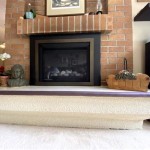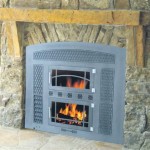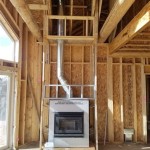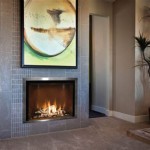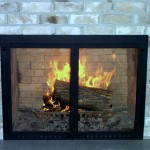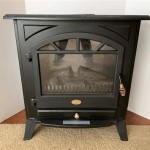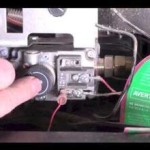Can You Grill in a Fireplace? Exploring the Possibilities and Precautions
The question of whether grilling within a fireplace is a viable option arises frequently, particularly for those seeking alternative cooking methods or a unique culinary experience. While the idea presents a certain appeal, particularly during colder months or in situations where outdoor grilling is not feasible, a thorough understanding of the necessary equipment, potential hazards, and best practices is crucial. Attempting to grill in a fireplace without proper preparation and precautions can lead to safety risks, damage to the fireplace, and undesirable cooking results.
A traditional fireplace is primarily designed for heating a room and creating ambiance through the burning of wood. Its construction and ventilation system are optimized for this purpose, not for the demands of grilling. Grilling, conversely, involves the direct cooking of food over a heat source, often requiring higher temperatures and different airflow dynamics than a fireplace typically provides. Furthermore, the materials used in fireplace construction may not be compatible with the intense heat and potentially corrosive byproducts generated during grilling.
Therefore, a careful assessment of the fireplace's construction, the type of fuel used, and the potential impact on indoor air quality is paramount before considering grilling as a possibility. The following sections will delve into the key considerations, potential challenges, and necessary adaptations for safely and effectively grilling within a fireplace environment.
Key Point 1: Fireplace Suitability and Preparation
Not all fireplaces are suitable for grilling. Several factors determine whether a fireplace can be safely and effectively used for this purpose. The primary consideration is the construction of the fireplace itself. Older fireplaces, particularly those built with brick and mortar, may be more susceptible to damage from the intense heat fluctuations associated with grilling. Cracks, loose bricks, or weakened mortar joints can exacerbate the problem and pose a safety hazard. A professional inspection of the fireplace is highly recommended to assess its structural integrity and identify any potential weaknesses.
The presence of a functional chimney and adequate ventilation is also critical. The chimney's primary function is to effectively remove smoke and combustion gases from the fireplace and vent them outdoors. A clogged or poorly maintained chimney can lead to a dangerous buildup of carbon monoxide inside the house. A professional chimney sweep should inspect and clean the chimney before any grilling activities are undertaken. The damper, which controls airflow through the chimney, must be fully open during grilling to ensure proper ventilation.
Furthermore, the type of firebox within the fireplace influences its suitability for grilling. Fireboxes lined with firebrick are generally more resistant to high temperatures than those lined with other materials. Firebrick is specifically designed to withstand the extreme heat of a fire and provide a more durable cooking surface. If the fireplace lacks a firebrick lining, the risk of damage to the fireplace structure increases significantly.
Preparation also involves protecting the surrounding area from sparks and embers. A fire screen is essential to prevent sparks from escaping the fireplace and potentially igniting nearby flammable materials. Covering the floor around the fireplace with a non-flammable mat or sheet provides an additional layer of protection. All flammable items, such as curtains, rugs, and furniture, should be moved away from the fireplace before grilling.
Key Point 2: Equipment and Fuel Selection
Grilling in a fireplace necessitates specialized equipment designed to withstand the high temperatures and uneven heat distribution. A standard outdoor grill is not suitable for use within a fireplace due to size constraints and potential for damage. Instead, specialized fireplace grilling grates or racks should be used. These grates are typically made of heavy-duty steel or cast iron and are designed to fit within the firebox. They should be sturdy enough to support the weight of the food being grilled without buckling or collapsing.
Another crucial piece of equipment is a set of long-handled grilling tools. These tools allow for safe maneuvering of food over the fire without risking burns. Tongs, spatulas, and brushes with extended handles are essential for flipping, basting, and cleaning the grilling surface. Oven mitts or heat-resistant gloves are also necessary to protect hands from the intense heat.
The selection of fuel is also critical for successful and safe fireplace grilling. Charcoal briquettes are generally not recommended due to their tendency to produce excessive smoke and potentially release harmful chemicals indoors. Hardwood lump charcoal or seasoned firewood are the preferred fuel choices. Hardwood lump charcoal burns cleaner and hotter than briquettes, while seasoned firewood provides a more authentic grilling experience. The type of wood used can also impart different flavors to the food. For example, hickory wood is known for its smoky flavor, while applewood offers a sweeter, more delicate taste.
Regardless of the fuel chosen, it is essential to use a sufficient quantity to generate adequate heat for grilling. A deep bed of coals or a well-established wood fire is necessary to achieve the desired grilling temperature. The amount of fuel required will vary depending on the size of the fireplace and the type of food being grilled.
Key Point 3: Safety Precautions and Indoor Air Quality
Prioritizing safety is paramount when grilling in a fireplace. The primary hazard is the risk of carbon monoxide poisoning. Carbon monoxide is a colorless, odorless gas produced by incomplete combustion. It can build up to dangerous levels indoors if the fireplace is not properly ventilated. A carbon monoxide detector should be installed in the vicinity of the fireplace and regularly checked to ensure it is functioning correctly.
Opening windows and doors can improve ventilation and reduce the risk of carbon monoxide buildup. However, it is important to avoid creating drafts that could fan the flames and cause sparks to escape the fireplace. Monitoring the airflow within the room and making adjustments as needed is crucial.
In addition to carbon monoxide, grilling in a fireplace can also release other harmful pollutants into the air, such as particulate matter and volatile organic compounds (VOCs). These pollutants can irritate the respiratory system and exacerbate existing health conditions. Using a properly functioning chimney and ensuring adequate ventilation can help minimize the emission of these pollutants. Air purifiers with HEPA filters can also help remove particulate matter from the air.
Fire safety is another critical consideration. A fire extinguisher should be readily available in case of an emergency. All users should be familiar with the proper use of the fire extinguisher. Never leave the fireplace unattended while grilling. Keep a close eye on the fire and be prepared to extinguish it quickly if it becomes uncontrollable.
Finally, ensure proper disposal of ashes after grilling. Allow the ashes to cool completely before removing them from the fireplace. Place the cooled ashes in a metal container with a tight-fitting lid and store the container away from flammable materials. Never dispose of hot ashes in a plastic container or near combustible items.
In summary, grilling in a fireplace is possible with the right preparation, equipment, and precautions. However, it is essential to recognize the inherent risks involved and take steps to mitigate those risks. A structural assessment of the fireplace, proper ventilation, appropriate equipment, and adherence to safety guidelines are all critical for a safe and enjoyable grilling experience. Neglecting these factors can lead to property damage, health hazards, and potentially life-threatening situations. Therefore, careful planning and execution are essential for successfully and safely grilling within the confines of a fireplace.

Cooking At Home Over A Wood Fire Charles Van

How To Cook In An Indoor Fireplace 10 Steps With S

Can I Cook In My Fireplace Doctor Flue

How To Cook Over A Wood Fire Grill Or Campfire Fireplace

How To Cook In An Indoor Fireplace 10 Steps With S

Diy Building Outdoor Fireplace With Smoker And Grill Bbq

Got A Fireplace How About Cooking In It The Homesteading Hub

Grilling Steak In Your Fireplace Is Easier Than You Might Think

New Toy Tuscan Fireplace Grill The Bbq Brethren Forums

Unboxing The Snow Peak Pack Carry Fireplace Starter Kit Takibi Fire Grill
Related Posts

